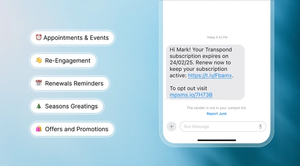Email marketing is the OG of digital marketing - businesses have been connecting with potential and existing customers via email for more than three decades.
Times have certainly changed but, even in our world teeming with social media buzz and flashy new marketing platforms, email marketing still holds its own - and email marketing metrics are the glue that holds all email marketing campaigns together.
Whether you're launching a product, nurturing leads, or just keeping your subscribers in the loop, you need to understand email marketing metrics.
Here, we’ll look at some key email marketing metrics that you can use to judge the success of your email marketing campaigns.
What are email marketing metrics?
Email marketing metrics - or email marketing KPIs - are the data points you use to judge how well your email marketing campaigns are performing. They provide key insights into how your customers are engaging with your campaigns.
Understanding how to interpret and use email marketing metrics for your email campaigns is crucial. Using them effectively means you can fine-tune your approach to email marketing until you’re firing on all cylinders.
Let’s look at some key email marketing metrics, why they matter, and how you can use different metrics to adapt your email marketing campaigns and make them even more effective.
1. Open Rate
The open rate measures the percentage of people who open your emails - it’s a primary indicator of how compelling your subject line really is.
If you're not catching your customer’s eye, you might as well be talking to the wall. After all, if your customers aren’t opening your emails, they’re missing out on all the relevant information that you’re trying to put across.
Why it matters:
A low open rate could signal that your emails aren’t enticing enough to your new or potential customers. This could be down to a couple of things.
The most obvious potential cause of low open rate is that your subject lines aren’t grabbing the attention of their recipients.
It’s also possible that your customers feel your marketing emails aren’t always relevant to them, so have learned to discard them without reading them.
How to improve your open rate
If you need to improve your open rate, look at the frequency and relevancy of your marketing emails. If a customer has one too many experiences of opening your emails and finding they aren’t interested in the content within, it could become second nature for them to just disregard everything you send them.
You should also look at your subject lines through the eyes of your email recipients - are they both attention-grabbing and relevant to the content within?

2. Click-Through Rate (CTR)
After your customers have opened your email, the real question is whether they're clicking where you want them to. That’s where your click-through rate (CTR) comes into play.
This handy metric reveals the percentage of your audience who are engaging further by clicking on the links you've included in your emails. It’s like taking a peek into your email's performance to see if your content is hitting the mark or if it's just sitting there.
Why it matters:
Your click-through rate (CTR) should be one of your go-to email marketing metrics, helping you gauge how much your customers are connecting with what you send their way.
This metric is a key indicator of how well your marketing emails are performing. If your CTR is on the lower side, it might be a signal that your call-to-action (CTA) isn't quite hitting the mark.
Perhaps it's time to spruce up your CTAs, or maybe the overall content isn't as engaging or relevant as it could be.
Think of your CTR as a direct line into your customers' interests and preferences. It lets you know which emails are making them click and which ones are getting a cold shoulder. By monitoring your CTR closely, you can start to see patterns and tweak your approach.
How to improve your CTR
If your CTR has begun to drop, it's time to rethink your email content or call-to-action placement.
Does your CTA encourage conversions? Is the anchor text of your links relevant? Is your CTA placed where your customers can see it, in clear and visible text? Try looking at your email from the point of view of your reader and judging whether you’d be encouraged to take action based on this CTA.
Maybe you need to experiment with different types of content, like adding more compelling images or videos, or maybe it's about adjusting the language of your emails to be more personal and less salesy.
3. Bounce Rate
Your email bounce rate indicates the percentage of your emails that couldn’t find their way to an inbox and were returned to sender.
There are two types of email bounce, hard bounces and soft bounces. Hard bounces mean the email address is a no-go, while soft bounces mean there may be a temporary issue that’s preventing your emails from reaching their intended recipient.
Why it matters:
High bounce rates can significantly impact your email marketing efforts, potentially harming your sender reputation.
When a large number of your emails are not delivered and bounce back, it signals to email providers that your campaigns might not be trusted, leading them to possibly block or filter your future emails.
Keeping bounce rates low is crucial for ensuring a high email deliverability rate, which in turn, ensures that your messages successfully reach your subscribers' inboxes.
How to improve bounce rates
Like all email marketing metrics, bounce rates need to be monitored carefully. To improve your bounce rates, you’ll first need to look at the causes behind your emails not reaching their intended recipient.
Factors such as invalid email addresses, strict email security filters and non-existent filters can cause hard bounces. You can prevent hard bounces from taking their toll on your sender reputation by using CRM software to block the affected email addresses.
Soft bounces are generally caused by a problem on the recipient’s end, such as temporary technical issues with mail servers or emails being rejected by the recipient’s email security filters.
You can attempt to prevent the latter by adding a reminder to your marketing emails asking your contacts to mark you a ‘safe sender’ within their security settings.
Regularly cleaning your email list, segmenting your audience to target the right subscribers, and optimizing your email content to meet your audience’s can also help reduce bounce rates.
Implementing double opt-in procedures where subscribers confirm their email addresses can also significantly decrease the likelihood of sending to incorrect addresses, maintaining your sender reputation and improving overall email performance.

4. List Growth Rate
The list growth rate metric is crucial for understanding the dynamics of your email marketing efforts. It calculates how quickly your subscriber list is increasing by tracking the number and frequency of new sign-ups over a given period.
This rate is essential for assessing the health of your email marketing, as it provides clear insights into the effectiveness of your lead generation strategies and the overall appeal of your content.
Analyzing email marketing metrics relating to list growth helps marketers gauge the success of their campaigns and promotional efforts aimed at increasing list subscriptions.
A growing list suggests effective marketing tactics and appealing content, while a stagnant or shrinking list can indicate issues with engagement or the need for refreshed outreach strategies.
By monitoring this metric, marketers can make data-driven decisions to optimize their approaches, adjust their call-to-action placements, or even reassess the incentives offered for signing up.
This proactive monitoring is key to maintaining a top email service provider and a healthy, active email list that supports broader marketing objectives.
Why it matters:
The list growth rate is a good indication of how appealing your marketing materials are to new and existing subscribers.
A healthy growth rate generally indicates that your emails are offering value to your readers, keeping them interested in what you have to offer. A stagnant or declining list growth rate could indicate your magnetism is waning.
How to improve your list growth rate
You can improve your list growth rate by looking at upward and downward trends in your mailing list growth.
Look at your email marketing metrics to identify which tactics seemed most effective in encouraging new sign-ups.
You could also consider adding an option for readers who wish to offer feedback on your marketing emails, as this could prove valuable in tailoring your content to be more effective and appealing.
5. Email Sharing/Forwarding Rate
The sharing and forwarding rate of your emails is a powerful indicator of your content's appeal and reach.
This metric reveals how frequently recipients are compelled to distribute your emails, either by forwarding them to personal contacts or by sharing them on social media platforms.
Advanced email analytics, marketing tools, and CRM systems can provide deeper insights into this behavior, allowing you to track not just how often your emails are shared, but also where they are being shared. This can include specific social media platforms or other online locations.
Some platforms offer the ability to see the comments and context in which your emails are shared, giving you a clearer understanding of what triggers the sharing behavior.
This information is invaluable as it helps you identify the aspects of your content that resonate most with your audience.
By understanding these dynamics, you can refine your content strategy to enhance engagement, encourage more sharing, and ultimately increase the visibility of your campaigns across diverse networks.
Why it matters:
Every time a reader shares your emails, they’re practically doing your job for you byt and allowing you to connect with some brand-new potential contacts.
High sharing rates signify content that resonates so well it’s worth spreading the word about. Low rates? It might be time to rethink your content's shareability factor.
How to improve your email sharing/forwarding rate
While it’s not all too common for readers to share marketing emails with their friends, you can almost guarantee that the ones that do get shared must be worth reading.
These shares are invaluable for getting a message in front of fresh eyes. If you’re striving for more shares, look to make your content as valuable as possible to the readers.
You may consider adding an incentive for readers to share, too, such as accessing exclusive offers or news.
6. Overall ROI
This is by far one of the most important email marketing metrics to keep an eye on, whatever your business or industry. Return on Investment (ROI) measures the bang you get for your buck. It calculates the total revenue generated from your email campaigns against the cost of running them.
Why it matters:
Your ROI helps you gauge the real measure of the financial success of your campaigns and allows you to be more informed when building your sales budget. Planning, launching, and sustaining an effective email marketing campaign is a worthwhile investment - as long as you're seeing the financial rewards.
If you're not seeing the numbers you want when you check your email marketing metrics, it might be time to reassess your email marketing strategy or budget allocation.

How to improve your Return on Investment
There are two different approaches you can take to improve ROI - and you should be using both of them. First, strive to generate a higher financial return through email marketing by reassessing your CTAs, content, reader incentives, and more.
The more readers are purchasing from your business because of your emails, the higher your ROI. You could also look for ways to save money on your marketing campaigns, as unnecessary spending could be limiting your ROI.
7. Unsubscribe Rate
Unsubscribe rates from your email marketing campaigns can tell a lot about how your audience feels about your content. Seeing your unsubscribe rate skyrocket could be a reality check for your email strategy.
Each unsubscribe is a hint—maybe what you're sending out isn't quite hitting the mark, or maybe it's not what your readers signed up for.
Why it matters:
While it’s normal to see some unsubscribes, a high rate could indicate your emails are actually annoying your readers. If you notice a spike in unsubscribes after a particular type of email, take it as a sign to pivot or tweak your content.
You need to keep this rate low to maintain a healthy relationship with your audience. By tracking when people don't unsubscribe, you can also get a sense of what’s working.
It’s all about actively listening to your audience's feedback through their actions and adjusting accordingly to keep them hooked and happy.
How to improve your unsubscribe rate
If you find that your unsubscribe rate has increased, you’ll need to put your content under scrutiny and work out what’s putting off your audience.
Maybe it’s time to switch up your tone, offer more value, or just double-check if what you’re sending is what your subscribers originally signed up for.
Tracking these metrics isn't just about seeing numbers go up and down. Take a look at the number of emails delivered that coincide with a drop in subscribers and try to work out what could have your readers hitting the unsubscribe button.
8. Spam Complaints
This metric counts the number of times your emails have been marked as spam or junk mail. Of all email marketing metrics, a high rate of spam complaints is the most urgent area you should strive to improve on.
Why it matters:
High spam complaints can lead to serious deliverability issues, as well as damaging your sender reputation. Receive enough spam complaints and you could find your emails are being automatically filtered into your contacts’ junk folders, causing crashing open rates and, eventually, soaring bounce rates.
It’s crucial to keep this metric as low as possible to stay in good standing.
How to reduce spam complaints
Keeping your spam rate low is reasonably straightforward, as long as you aren’t bombarding your subscribers with emails too frequently and the content feels relevant and legitimate.
Make sure you aren’t using overzealous sales tactics or overt clickbait subject lines. This is a surefire way to see your spam complaints skyrocket.
9. Email Read Length
How long do recipients spend reading your emails? This metric gives you an idea of their engagement level beyond just opening or clicking through.
It's one of the most effective email marketing metrics to use when measuring your recipients' interest in the actual content of your emails, not just the subject line.
Why it matters:
If your readers are only glancing at your emails, your message might not be sticking. Longer read times typically indicate more engaging content, which is essential for building relationships and driving actions.
When customers don’t read your emails in full, they could be missing out on key content, including your CTAs.
Your email read length also gives you a good indicator of how much time and energy your contacts are willing to pay to read your email marketing materials.
How to improve read length
If your read length is lower than you’d like, try making some changes to your email content. First off, make sure that you’re prioritizing readability within your marketing emails - try to keep paragraphs short and snappy.
You should also ensure you’re keeping your content relevant to the readers. Respect your readers’ time and they’ll be more receptive to taking in your content.

Mobile Open Rate
The mobile open rate is a metric that tracks the percentage of email recipients who open an email on their mobile devices.
This metric can provide useful insight into how well your email campaigns are performing on mobile platforms.
Why it matters
Plenty of us use our mobile phones to check our emails. Optimizing emails for mobile viewing is increasingly important for ensuring that content is accessible and engaging for users who prefer to access their emails on smartphones or tablets.
This metric can influence decisions about email design, layout, and the timing of your emails to maximize engagement from mobile users.
If your mobile open rate is low, it could indicate that mobile users have previously found your emails aren’t easy to navigate or read from their mobile devices and might avoid opening new emails from you.
This means you’re missing out on a key opportunity to engage with mobile users, which could go on to affect all your other email marketing metrics negatively.
How to improve your mobile open rate
To make your emails shine on mobile, start with a responsive design so everything looks good regardless of screen size. Keep your subject lines short and sweet because long ones will get chopped off on smaller screens.
Using large, finger-friendly buttons for your calls to action is also a must since smaller links will be much harder for mobile users to tap on.
Finally, don’t forget to pare down your content to what’s essential. No one wants to scroll forever on their phone. Keep it simple, and your mobile readers will thank you.
11. Conversion Rate
All email marketing metrics are important but your conversion rate is the proof of the pudding. The conversion rate shows the percentage of recipients who have responded positively to your CTA and have completed a desired action, like filling out a form or purchasing a product.
It shows just how effective your email marketing campaigns ultimately are at securing new or repeat business.
Why it matters:
Your conversion rate tells you if your email marketing campaigns are securing a real return on investment. Low conversion rates could mean your emails are not persuasive enough - or that your landing pages are about as welcoming as a closed door.
How to improve your conversion rate
Improving your sales conversion rates means working on all your email marketing metrics, making sure every element of your campaign is working effectively. You’ll need to look at every contact point your customers experience when receiving one of your emails and what happens afterward.
Put yourself in the shoes of your reader from start to finish. How does the subject line make you feel? Do you feel as though the content within the email is relevant to your customer, and not too long or complex? Is the CTA clear in what it encourages customers to do? If your customer does choose to follow the CTA, does the hyperlink take them exactly where they need to go? Is it straightforward for customers to fulfill your CTA or are you asking them to jump through too many hoops?
Look at all of your email marketing metrics and identify room for improvement, no matter how small. It all adds up.
Improving your conversion rate means creating an email marketing campaign that hits each mark effectively. Your marketing emails need to be attention-grabbing, and straightforward and inspire your readers to take positive action. So it’s important to make this action as simple for them to complete as possible.
If you get these points right, you should start to see vast improvements to your conversion rate.
Putting it all together
Email marketing metrics are more than just numbers—they're a critical toolkit for boosting the effectiveness of your marketing efforts.
These email marketing metrics serve as a guide, influencing your marketing decisions and refining your strategies to ensure you connect more meaningfully with your audience.
By analyzing these indicators, you gain insights into what resonates with your subscribers, enabling you to tailor your content more precisely to their preferences and needs.
From metrics to action: what to do after analyzing your data
Analyzing your email marketing strategy provides valuable insights, but it’s how you act on those insights that drive success. Email metrics such as emails delivered can help gauge your reach, but it’s essential to focus on how these numbers translate into real business results.
Consider vanity metrics
Instead of getting lost in vanity metrics like open rates and click-to-open rates, focus on data that directly impacts your business growth. While open rate is a good indicator of subject line effectiveness, focusing only on it can be misleading. Check conversion rates to see how well your emails are actually driving sales.
Tracking long-term engagement
Beyond new subscribers, track the long-term impact of your emails. Monitor customer loyalty and customer lifetime value to assess how well your email marketing nurtures relationships and brings repeat business.
Subscriber acquisition cost
Evaluate how much you're spending to gain a subscriber. If your subscriber acquisition cost is high, consider adjusting your approach by targeting more relevant audiences or refining your email content.
The importance of using email marketing metrics
The real value of email marketing metrics lies not just in their collection but in their application.
By continuously testing different approaches and making data-driven adjustments to your campaigns, you can enhance engagement and increase the relevance of your emails.
This might involve experimenting with different subject lines, adjusting the timing of your emails, or varying the content to see what generates the best response.
The objective is always to craft emails that are not only read but valued by your audience, thereby fostering stronger connections and driving better results from your email marketing campaigns.
A nudge towards CRM
While juggling these metrics might seem daunting, a Customer Relationship Management (CRM) system can be your best friend.
Capsule CRM includes a range of innovative features that can help you track these metrics effortlessly, offering insights that are not just numbers but stories—stories about your customers, what they like, and how they behave.
Harnessing the power of Capsule CRM can transform your own email marketing program into a precision tool, fine-tuned to speak directly to your audience's needs and interests.
Access key email marketing metrics with Capsule CRM
Take an in-depth look at your email marketing data, start interpreting the stories behind the numbers, and adjust your sails as you go.
Remember, the more you know, the better you can connect with your audience. And if you’re ready to supercharge your efforts, consider stepping up your game with a CRM tool that aligns with your marketing goals.
Remember, your email strategy isn’t just a tactic—it’s a pivotal part of your relationship with your customers. Make every interaction count with Capsule - try it free today.
FAQ
Vanity metrics are data points that might look good but don’t offer any valuable or insightful information. The information they offer can’t be used to inform decisions and they don’t tend to provide any actionable next steps.
Examples of vanity metrics in email marketing include total subscribers or shoppers caught in the email sales funnel. If you look at a metric and don’t really know what to do with the information it gives you, it could be a vanity metric.
The general consensus is that the average successful email campaign yields an ROI of around $36 for every $1 spent. Of course, if you’re starting from scratch, it may take a while to hit this level of return on investment. However, if you carefully monitor your key email marketing metrics and use them appropriately, you’ll soon start to see results.
Your unsubscribe rate is calculated by dividing the number of total emails you’ve sent by the number of recipients who have unsubscribed. An unsubscribe rate of less than 0.5% is generally considered healthy, as long as you have a good-sized email list. If your unsubscribe rate starts to creep above this, you’ll need to identify why and take steps to prevent further losses.




